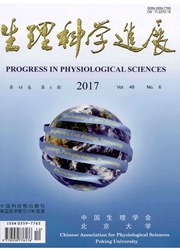

 中文摘要:
中文摘要:
氢硫化物(H 2 S ) 是调整心血管的功能的 gasotransmitter。现在的学习试图决定慢释放的 H 2 心肌的局部缺血和灌注(I/R ) 上的 S 施主 GYY4137 损害并且调查包含的可能的发信号机制。男 Sprague-Dawley 老鼠在 12.5 mg/ 与 GYY4137 被对待(kg·;白天) , 25 mg/(kg·;白天) 或 50 mg/(kg·;白天) intraperitoneally 为 7 天。然后,老鼠受到 30 分钟灌注跟随 24 个小时的左前面的下降冠的动脉吸藏。我们发现 GYY4137 增加了心脏的喷射部分并且部分弄短,减少了局部缺血区域,减轻了组织学的损害并且减少在心肌的 I/R 以后的血浆肌酸 kinase。两 H 2 在血浆和 cystathionine-γ 的 S 集中;在心肌层的 -lyase (CSE ) 活动在 GYY4137 被提高对待的组。GYY4137 也减少了在浆液,稀释 superoxide 阴离子水平和 mitogen 的压制的 phosphorylation 的 malondialdehyde 和 myeloperoxidase 层次在 I/R 以后在心肌层激活蛋白质 kinases。同时, GYY4137 增加了 Bcl-2 的表示,但是减少在心肌层的 Bax, caspase-3 活动和 apoptosis 的表示。数据建议 GYY4137 由 attenuating 免于心肌的局部缺血和灌注损害氧化应力和 apoptosis。
 英文摘要:
英文摘要:
Hydrogen sulfide (H2S) is a gasotransmitter that regulates cardiovascular functions. The present study aimed to determine the protective effect of slow-releasing H2S donor GYY4137 on myocardial ischemia and reperfusion (I/R) injury and to investigate the possible signaling mechanisms involved. Male Sprague-Dawley rats were treated with GYY4137 at 12.5 mg/(kg.day), 25 mg/(kg.day) or 50 mg/(kg.day) intraperitoneally for 7 days. Then, rats were subjected to 30 minutes of left anterior descending coronary artery occlusion followed by reperfusion for 24 hours. We found that GYY4137 increased the cardiac ejection fraction and fractional shortening, reduced the ischemia area, alleviated histological injury and decreased plasma creatine kinase after myocardial I/R. Both H2S concentration in plasma and cystathionine-γ-lyase (CSE) activity in the myocardium were enhanced in the GYY4137 treated groups. GYY4137 also decreased malondialdehyde and myeloperoxidase levels in serum, attenuated superoxide anion level and suppressed phosphorylation of mitogen activated protein kinases in the myocardium after I/R. Meanwhile, GYY4137 increased the expression of Bcl-2 but decreased the expression of Bax, caspase-3 activity and apoptosis in the myocardium. The data suggest that GYY4137 protects against myocardial ischemia and reperfusion injury by attenuating oxidative stress and apoptosis.
 同期刊论文项目
同期刊论文项目
 同项目期刊论文
同项目期刊论文
 The hydrogen sulfide donor, GYY4137, exhibits anti-atherosclerotic activity in high fat fed apolipop
The hydrogen sulfide donor, GYY4137, exhibits anti-atherosclerotic activity in high fat fed apolipop 17ss-estradiol antagonizes the down-regulation of ERalpha/NOS-3 signaling in vascular endothelial dy
17ss-estradiol antagonizes the down-regulation of ERalpha/NOS-3 signaling in vascular endothelial dy l-Tetrahydropalmatine, an active component of Corydalis yanhusuo W.T. Wang, protects against myocard
l-Tetrahydropalmatine, an active component of Corydalis yanhusuo W.T. Wang, protects against myocard GYY4137protects against myocardial ischemia and reperfusion injury by attenuatingoxidative stress an
GYY4137protects against myocardial ischemia and reperfusion injury by attenuatingoxidative stress an 期刊信息
期刊信息
